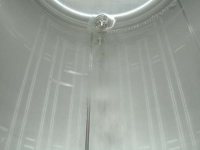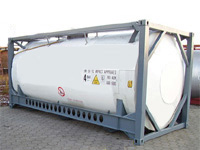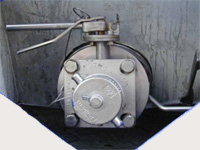Basic information about tankcontainer
We differentiate in general between three main categories of tankcontainer:• Tankcontainer for chemicals or hazardous products
• Tankcontainer for foodgrade products
• Tankcontainer for gases
Furthermore as distinct from commonly used single shell tankcontainer - with or without baffle plate - are also multi barrel tankcontainer with two or more independent operated systems available.
Tankcontainer have in general capacities (filling volume) from 11.000 up to 35.000 litre, but mostly used and available capacities ranging from 20.000 and 26.000 litre, which fit into a standard 20' ISO steel frame with corner castings to facilitate mechanical handling even in loaded condition.
Tankcontainer can be moved by ship, rail or truck in either empty or loaded condition.
By moving empties you can carry 2 x 20' tankcontainer simultaneously (cost effective) on a container chassis Oversee transportation with ISO tankcontainer are also a preferred method of shipment, as these not (likewise 30' or 2.5.mtr wide tankcontainer) have to be declared and stowed away as (cost effective) deck cargo. .
Shell:
The material of tankcontainer barrels depends on the properties of products to be transported as well as the required working pressure as recommended under IMDG code for the transportation or storage of dangerous goods. Mild steel is manly used for products with low corrosion resitance and/or requiring high working pressure . Stainless steel material grade V4A (316) with various grades of alloy and high corrosion resistance are mostly used for products in class 3, 6, 8 and 9.
Details you will find under:Tankcontainer materials.pdf - 32,3 kB
Frame:
The basis consist of an (mostly 20') ISO steel frame with integrated barrel attached with stabilizing members.
Loading / Discharging:
As a function of filling and discharging tankcontainer are fitted with auxiliary devices. Unless otherwise specified shall filling (loading) be carried out either through the dome or piping system, while discharging will be done through the bottom outlet valve or top valve with syphon pipe.
Scope of applications:
The main scope of application is primarily the petroleum and food chemistry, but increasingly also for storage of alternative energy, like bio diesel, rape oil or similar biological products.
Further too Chemical tankcontainers - Foodgrade tankcontainers


